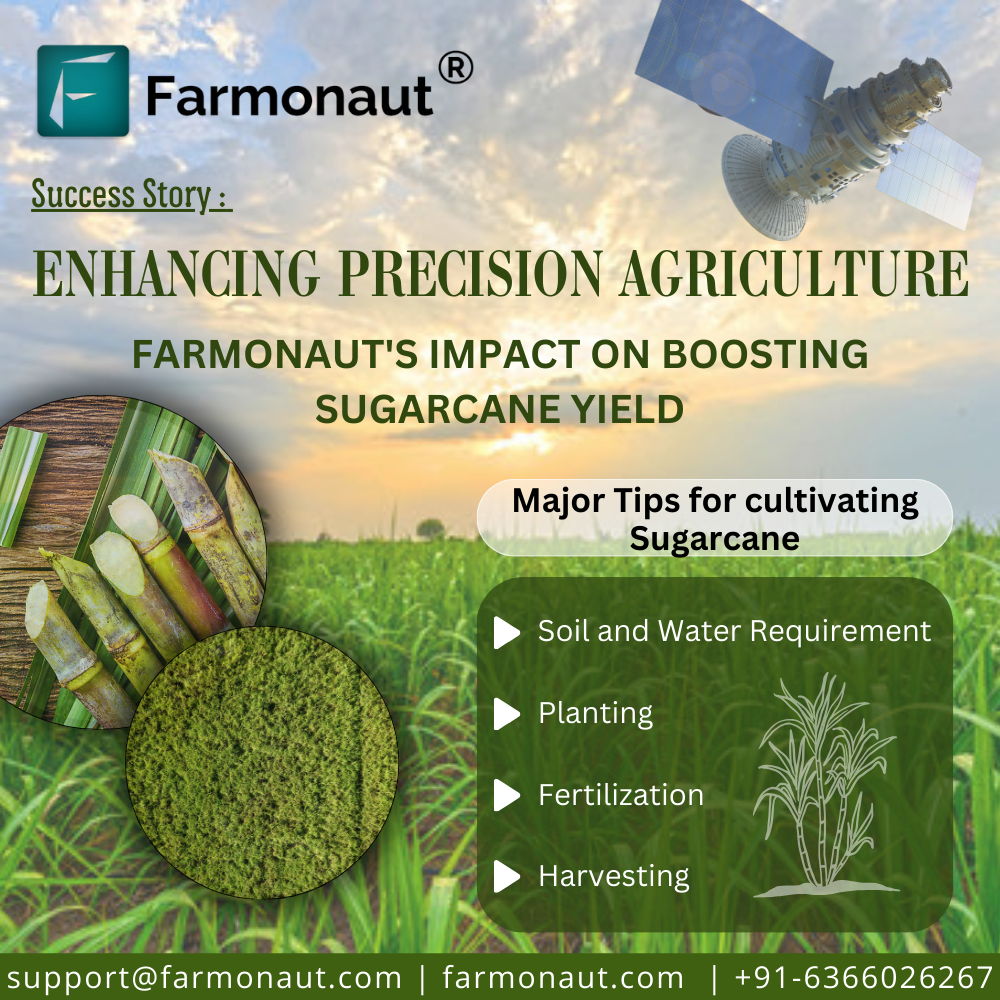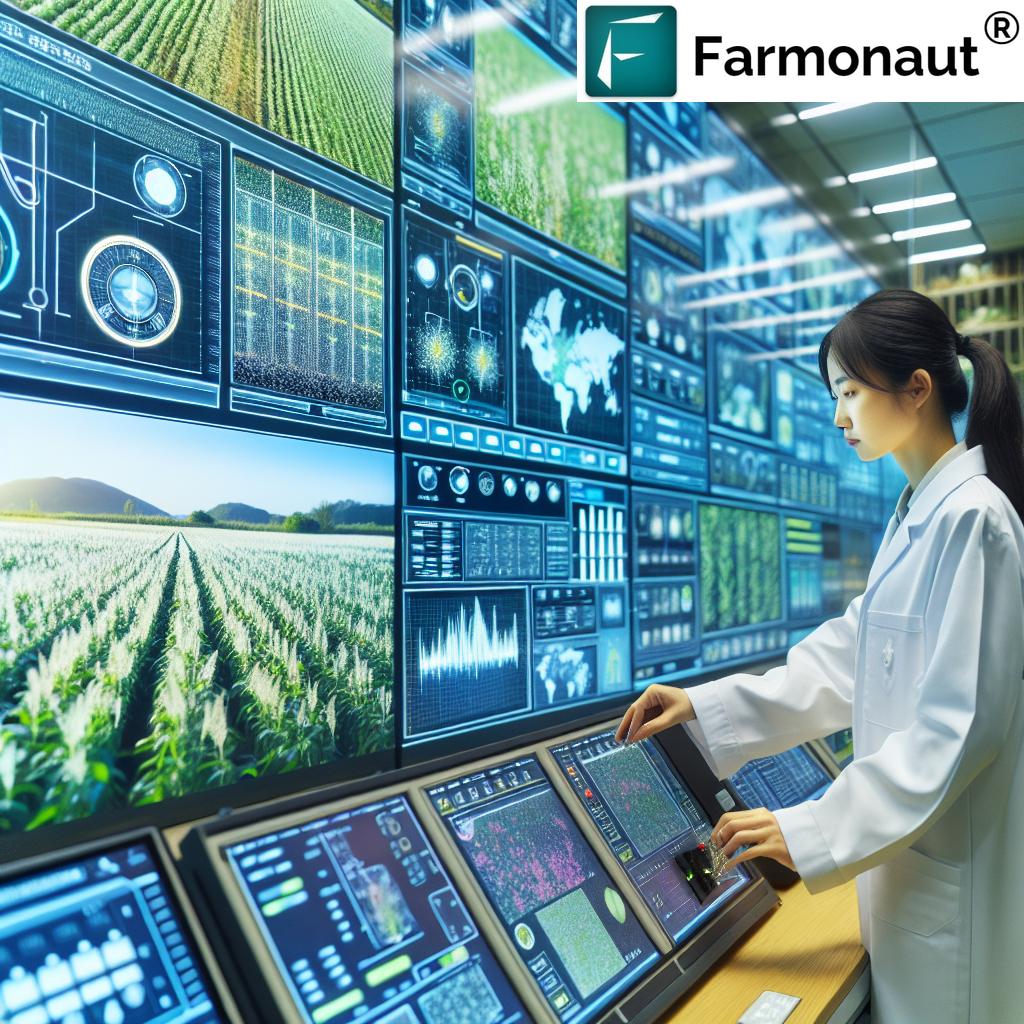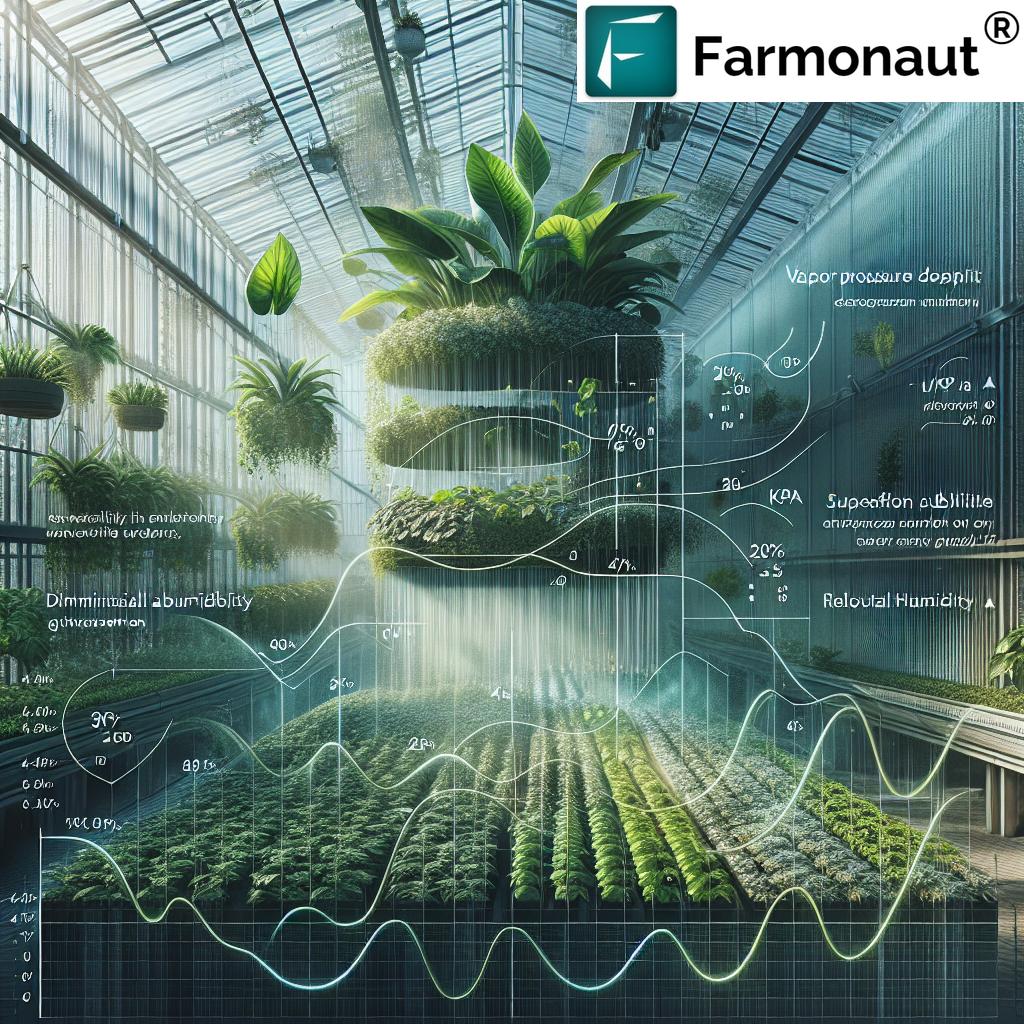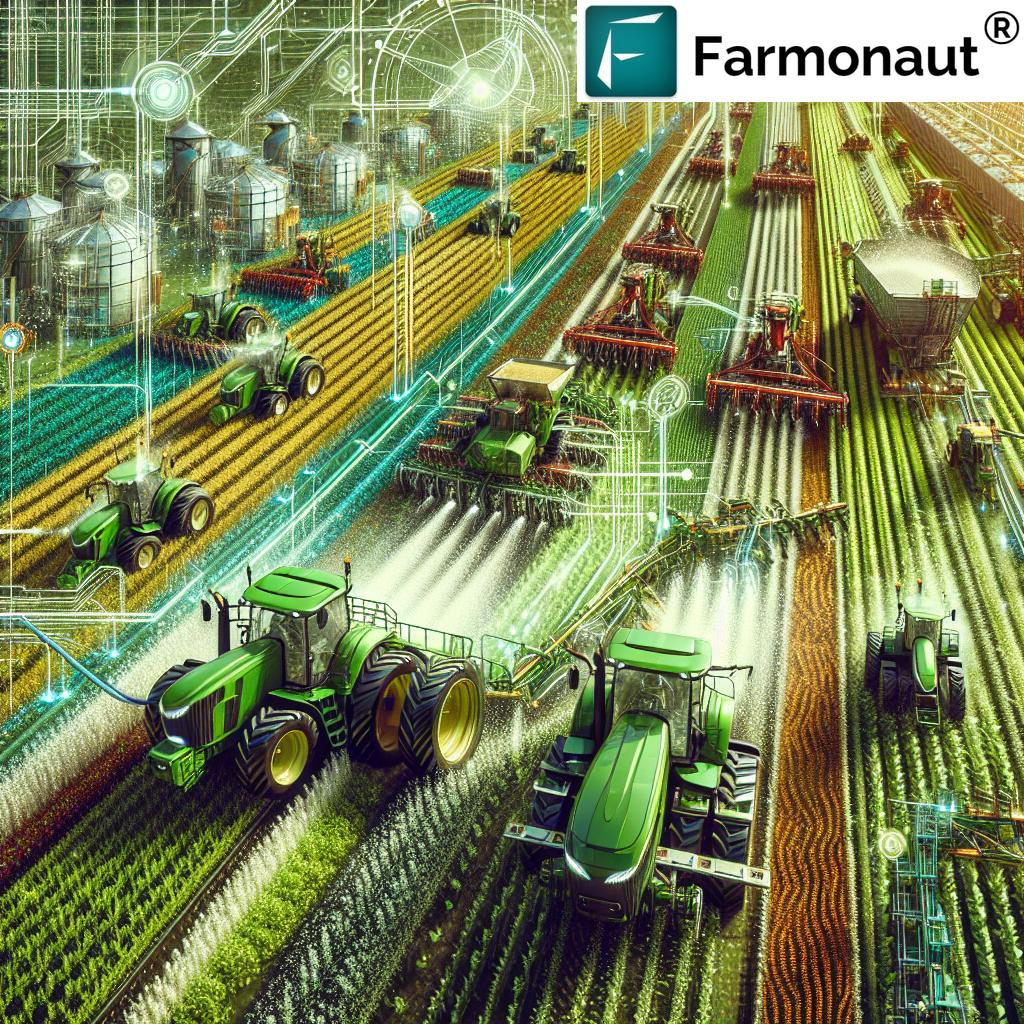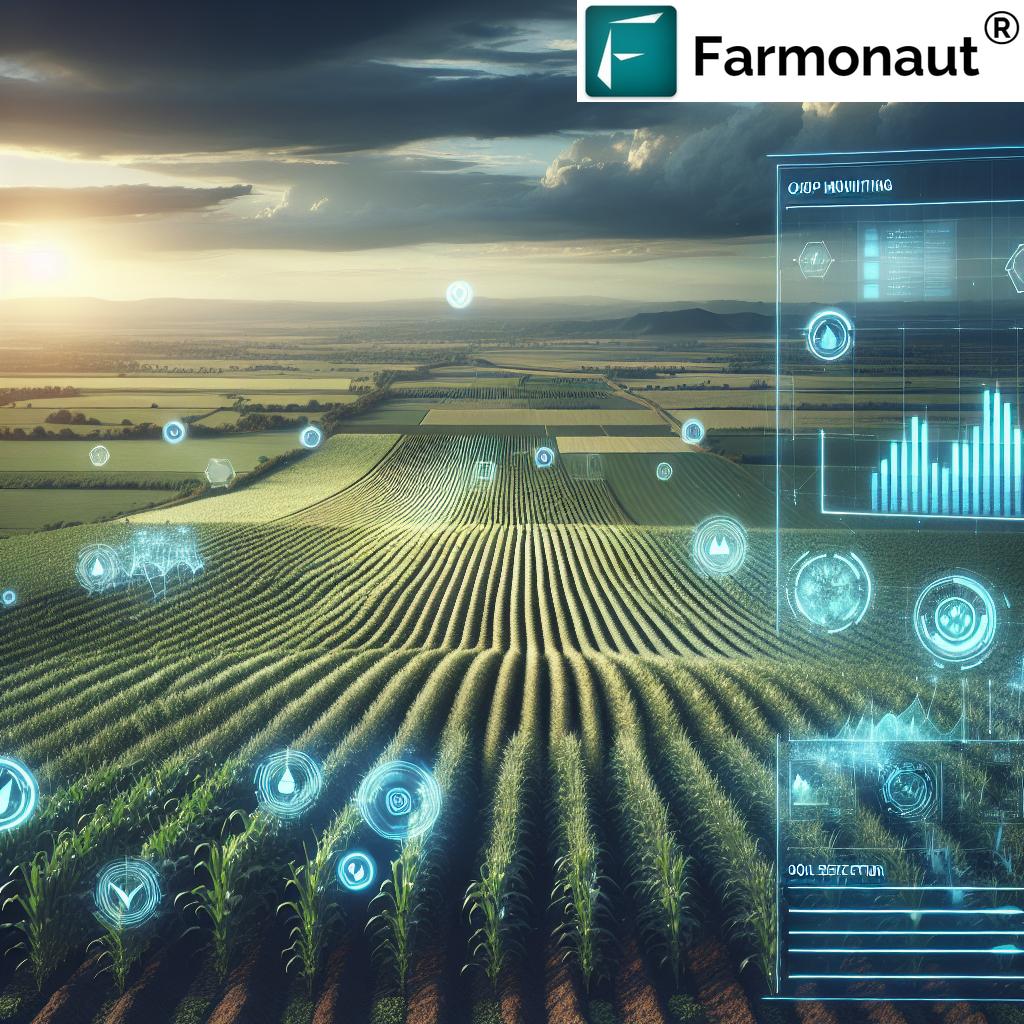Best Fertilizer 2026: Top Tree, Spring, Corn & K Picks
Meta Description: Best fertilizer technologies 2026—Explore advanced tree, spring, corn, and potassium (K) fertilizers. Boost yields, maximize soil health, and embrace precision farming for a sustainable future.
 Access Real-Time Satellite Insights for Fertilizer Application on Our App
Access Real-Time Satellite Insights for Fertilizer Application on Our App
“Tree fertilizers in 2025 utilize up to 40% more micronutrient efficiency, revolutionizing sustainable orchard management.”
Table of Contents
- Best Fertilizer: A Foundation for Productive Farming
- Best Tree Fertilizer: Nourishing Growth Beyond the Roots
- Best Spring Fertilizer: Preparing for a Robust Growing Season
- Best Fertilizer for Corn: Maximizing a Staple Crop’s Potential
- Best Hydroponic Fertilizer: Precision Nutrition in Soilless Cultivation
- K Fertilizer: Potassium’s Critical Role
- Comparative Features & Performance Table (2025–2026)
- Precision Agriculture & Satellite-Based Insights: The Farmonaut Edge
- FAQ: Best Fertilizers & Nutrient Management 2026
- Conclusion: Fertilizer Choices for a Productive, Sustainable Future
Best Fertilizer: A Foundation for Productive Farming
The term “best fertilizer” is at the center of modern agriculture discussions, shaping our approach to maximizing crop yields, sustaining soil health, and ensuring environmental sustainability as we move further into 2026 and beyond. Choosing the right fertilizer is inherently relative, depending heavily on:
- Crop type and stage of growth
- Soil conditions: pH, organic matter, previous crop residues
- Climatic factors: temperature, rainfall, and seasonal variations
Generally, balanced NPK fertilizers (Nitrogen-Phosphorus-Potassium) remain the cornerstone of productive agriculture. Let’s break down why each macronutrient is indispensable:
- Nitrogen (N): Supports vegetative growth, chlorophyll formation, and overall plant vigor
- Phosphorus (P): Enhances root and flower development, crucial for early plant establishment
- Potassium (K): Improves resistance to disease, strength, fruit and seed quality, and drought tolerance
But as we approach 2025 and 2026, the landscape is evolving:
- Innovations like controlled-release fertilizers and slow-release fertilizers are gaining attention for their efficiency in reducing nutrient leaching and environmental impact.
- Increased focus on tailored nutrient management for specific crops, whether it’s maximizing corn yields or sustaining young orchard trees.
- Environmental stewardship — using fertilizers that maintain or improve soil health long-term.
Best Tree Fertilizer: Nourishing Growth Beyond the Roots
Trees—whether in timber forestry, fruit orchards, or urban landscapes—demand a nuanced fertilization approach compared to field crops or vegetables. Why? The growth cycles are longer, nutrient uptake is slower, and the health of roots is paramount for sustained productivity and resilience.
Key Considerations for Tree Fertilizer Choices in 2025–2026:
- Phosphorus-content is often higher in the best tree fertilizer blends, especially for young saplings, encouraging a robust root system and strong initial establishment.
- Micronutrients (like magnesium, calcium, zinc, iron) are critical for sustained vigor, fruit development, and foliage health, particularly in established trees in nutrient-poor soils.
- Organic fertilizers enriched with biochar and mycorrhizal inoculants represent an emerging trend, improving soil structure, microbial activity, and nutrient uptake sustainably.
- Slow-release or granular delivery systems minimize nutrient loss due to rainfall/runoff, improving long-term nutrient availability.
- Fertilizers with trace elements are routinely applied to correct minor, yield-limiting deficiencies.

Monitor Tree Health, Nutrient Uptake, and Soil Fertility in Orchards With Farmonaut’s App
2025 technologies drive orchard managers toward more site-specific and tailored fertilization. Satellite mapping and spectral analysis—like what’s offered via large-scale farm management systems from Farmonaut—enable oversight of tree vigor, moisture, and nutrient status in real time.
Examples: Best Tree Fertilizer Formulations in 2025–2026
- Enhanced NPK Granules (10-20-12) + Magnesium + Zinc for general orchard use
- Mycorrhizal Biochar Pellets + Organic Matter for soil improvement and young saplings establishment
- Liquid Fertilizers with Trace Elements for correct foliar nutrition in micronutrient-deficient regions
Best Spring Fertilizer: Preparing for a Robust Growing Season
Spring marks the renewed life of plants, crops, and trees—making it a crucial season for fertilization. The goals of spring fertilizer regimens are clear:
- Promote rapid vegetative growth as plants emerge from dormancy or germinate anew
- Strengthen roots for sustained water and nutrient uptake through the growing season
- Address winter nutrient depletion to set the foundation for maximum yields later
The best spring fertilizer blends are typically shaped around nitrogen, but advancements in precision agriculture in 2025–2026 are transforming how these nutrients are delivered:
- Split nitrogen applications to match the plant’s changing needs and minimize leaching
- Real-time nutrient mapping and soil tests guide precision fertilizer placement, optimizing efficiency, sustainability, and cost.
- Phosphorus and potassium are not neglected—often banded into the root zone for early-season strength and immunity to disease.
For spring vegetables and field crops, satellite-based environmental impact monitoring (such as offered by Farmonaut) allows farmers to verify carbon footprinting of fertilizer use, ensuring sustainability and compliance with global standards.
 Track Spring Fertilizer Application and Crop Progress with Farmonaut’s Android App
Track Spring Fertilizer Application and Crop Progress with Farmonaut’s Android App
Best Fertilizer for Corn: Maximizing a Staple Crop’s Potential
“Precision corn fertilizers in 2025 can increase yield by 18% compared to conventional practices, optimizing every hectare.”
Corn (maize) stands as a major staple crop globally—and its productivity depends heavily on the fertilizer regime. The best fertilizer for corn in 2026 works on several scientific, agronomic, and environmental fronts:
Key Requirements:
- Nitrogen: Corn is a nitrogen-intensive crop. Products like urea or urea-ammonium nitrate (UAN) remain popular, but split applications are standard.
- Potassium (K fertilizer): Essential for stalk strength, stress resistance, and grain development. Potassium chloride and potassium sulfate are typical—choice depends on soil chloride sensitivity.
- Phosphorus: Applied as monoammonium phosphate (MAP) or diammonium phosphate (DAP), boosting root structure and supporting high-yielding hybrids.
- Micronutrients: Zinc, sulfur, manganese, and boron are increasingly included to ensure full potential is reached.
Technology is revolutionizing management:
- Precision sensors and NDVI satellite imagery—like those accessed through Farmonaut—directly guide variable-rate application, boosting efficiency and yields.
- Enhanced efficiency products, including nitrification inhibitors and coated slow-release formulations, are minimizing nutrient losses to the atmosphere and groundwater.
Practical Application:
- Starter Fertilizer: Low-salt, phosphorus-rich blends applied in-furrow at planting
- Side-dress Nitrogen: Main split-application, adjusted by in-season soil and crop monitoring
- Foliar Feeds: Often used at key growth stages to supply micronutrients for optimized grain fill and quality
To further support optimal input use, Farmonaut’s advisory insights can analyze real-time satellite data and weather forecasts, guiding the precise timing for corn fertilization and maximizing both productivity and environmental outcomes.
Best Hydroponic Fertilizer: Precision Nutrition in Soilless Cultivation
Hydroponics and modern soilless cultivation systems are seeing rapid adoption in urban agriculture, vertical farming, and greenhouse horticulture around 2026. The focus here is on precision nutrition—since plants grow without soil, the solution delivers all macro and micronutrients in precise concentrations.
Crucial Features of the Best Hydroponic Fertilizer:
- Nutrient solutions are “complete”—they contain balanced ratios of nitrogen (usually as nitrate), phosphorus, potassium, calcium, and magnesium, plus trace elements like zinc and boron.
- High water solubility is essential; calcium nitrate and potassium nitrate are two of the most universally utilized sources.
- Stable pH and EC (Electrical Conductivity) are critical for healthy plant growth—so many formulations now include pH buffers and stabilizers.
- In 2025–2026: Bio-stimulants and humic substances in hydroponic fertilizer blends are boosting root mass and improving resilience, without relying on soil biology.
Common Best Hydroponic Fertilizer Examples:
- A-B Grow/Bloom Solutions: Deliver a perfectly balanced macro and micronutrient profile for every plant stage
- Specialty Hydroponic Blends: Include magnesium sulfate for chlorophyll formation or added iron chelates for fast-growing leafy greens
- Customizable “DIY” Blends: Formulated based on plant-specific tissue testing through spectral monitoring and AI-based guidance systems like those provided by Farmonaut
Advanced hydroponic growers are also utilizing Farmonaut’s satellite & crop monitoring API and developer dashboards to integrate AI-advisory, weather data, and resource management data into their soilless nutrition routines.
K Fertilizer: Potassium’s Critical Role
Potassium (K) is one of the three macronutrients in agriculture, yet its importance has never been more widely recognized as it is heading into 2026.
Why Use K Fertilizer?
- Regulates water use efficiency and osmoregulation in plants
- Strengthens tissue walls, improves resistance to lodging, pests, and diseases
- Drives fruit and grain quality, color, size, and shelf-life
- Crucial for sugar/starch synthesis (especially in crops like corn, potatoes, sugarcane, and fruit trees)
Fertilizer R&D in 2025–2026 is generating:
- Potassium Sulfate (SOP): For high-value fruit and vegetable systems, where added sulfur is beneficial and chloride must be minimized
- Potassium Chloride (MOP): Most common, cost-effective for broadacre cropping unless the soil or crop is chloride sensitive
- Potassium Magnesium Sulfate (K-Mag): An emerging, environmentally conscious option that supplies magnesium as well, supports soil structure, and reduces chloride build-up
Global trends—especially tighter regulations on fertilizer runoff and a rise in soil health diagnostics through satellite remote sensing—are encouraging site-specific K fertilizer choices. We recommend using traceability solutions to track and verify that potassium applications are optimized for crop type, yield goals, and environmental footprint.
Comparative Features & Performance Table: Best Fertilizer Technologies (2025–2026)
Precision Agriculture & Satellite-Based Insights: The Farmonaut Edge
Our journey to maximize crop yields and ensure sustainability cannot be complete without leveraging satellite-driven insights and AI-supported analytics. At Farmonaut, we believe data-driven precision agriculture is the key to effective fertilizer management in 2025 and beyond.
What Does Farmonaut Offer for Fertilizer and Nutrient Management?
- Real-Time Monitoring: Our multispectral satellite imagery detects variations in plant health (NDVI), soil moisture, and nutrient status—empowering users to target fertilizer inputs efficiently.
- AI-Based Advisory: The Jeevn AI platform analyzes field scenarios to recommend fertilizer types, timings, and rates for crops, trees, and hydroponic systems.
- Blockchain-Based Traceability: We facilitate supply chain traceability and verification of fertilizer practices, increasing transparency for global food chains.
- Resource Management: Integrated fleet management tools help optimize fertilizer logistics, reducing costs and environmental impact, especially on large farms.
- Environmental Impact Tracking: Through our satellite platform, users can monitor carbon footprinting from fertilizers and comply with emerging regulatory standards.
API Access: Our API integration allows agronomy advisors, agri-tech companies, and vertical/hydroponic farms to connect satellite data directly with their fertilizer planning, irrigation scheduling, and nutrient audits.
Subscription-Based Solutions:
Our platform is designed to scale from smallholder fields to multi-thousand-hectare operations, ensuring every farmer and agri-business can embrace advanced, affordable, and sustainable fertilizer management technologies.
FAQ: Best Fertilizer & Nutrient Management 2026
1. What makes a fertilizer the “best fertilizer” for my crop?
The “best fertilizer” is tailored to your crop type, soil conditions, and local climate. The ideal product will match nutrient requirements (N-P-K and micronutrients), offer slow or controlled release if needed, and minimize environmental impact. For trees, high phosphorus and micronutrient content is often important; while for corn, nitrogen and potassium are critical. New technologies—like polymer coating and AI-driven application strategies—help transform standard blends into the best for specific cases.
2. How are slow-release and controlled-release fertilizers changing agriculture in 2026?
Slow-release and controlled-release fertilizers release nutrients over time, syncing with plant requirements and reducing the risk of leaching or volatilization. In 2026, these technologies, especially when combined with satellite crop monitoring and precision application, deliver higher productivity, enhanced soil health, and greater sustainability.
3. Why is potassium (K fertilizer) considered indispensable for modern crops?
Potassium is vital for water management, disease resistance, and fruit/grain quality. It is especially critical for high-yielding corn, orchard trees, and many spring crops. Inappropriate K levels can result in poor yields, weak stem strength, increased disease, and lower-quality harvests.
4. What are the environmental benefits of using advanced/bio-based fertilizers?
Bio-based and controlled-release fertilizers enhance soil organic matter, improve nutrient conversion, reduce environmental losses (leaching and runoff), and support healthy soil microbes. They also reduce carbon footprint, which can be monitored via solutions like Farmonaut’s satellite-based trackers.
5. How does Farmonaut support fertilizer efficiency and sustainability?
We offer real-time monitoring of crop and soil health via satellites, AI-based fertilizer advisory, blockchain for traceability of responsible fertilizer use, and APIs for integrating these insights into partner apps. Our focus is on maximizing yields and sustainability for every farm—whether conventional, orchard, or hydroponic.
Conclusion: Fertilizer Choices for a Productive, Sustainable Future
As we move through 2025 into 2026 and beyond, the definition of the best fertilizer continually adapts to advances in technology, a deeper scientific understanding of plant nutrition, and evolving environmental expectations.
- NPK fertilizers remain foundational—but the methods of application, precision targeting, and seasonal timing are now just as important as the product itself.
- Tree nutrition benefits from a tailored approach—focusing on phosphorus, micronutrients, and soil health with the help of organic inputs and mycorrhizal-enhanced blends.
- Spring fertilization is turning ever more efficient with split nitrogen, root zone targeting, and real-time data support.
- For corn, yield maximization requires a combination of advanced nitrogen management, potassium stability, and micronutrient boosts—underpinned by technology, not guesswork.
- Hydroponic systems demand total control, relying on highly soluble blends, nitrate forms, and real-time water/solution diagnostics.
- Potassium (K fertilizer) is being more closely managed, with innovative options improving both crop output and soil sustainability.
The future of fertilizers rests on precision, sustainability, and tailored strategies. By leveraging advanced tools—like those provided by Farmonaut—you can ensure your farming practices are not only productive and cost-efficient, but also in harmony with the planet’s needs.
 Start Monitoring Crop Nutrition with Farmonaut
Start Monitoring Crop Nutrition with Farmonaut
Ready to optimize your fertilizer strategy for 2026 and beyond? Embrace technology, focus on sustainability, and make the most of every hectare with smarter inputs, deeper soil knowledge, and a new era of data-driven agriculture.


